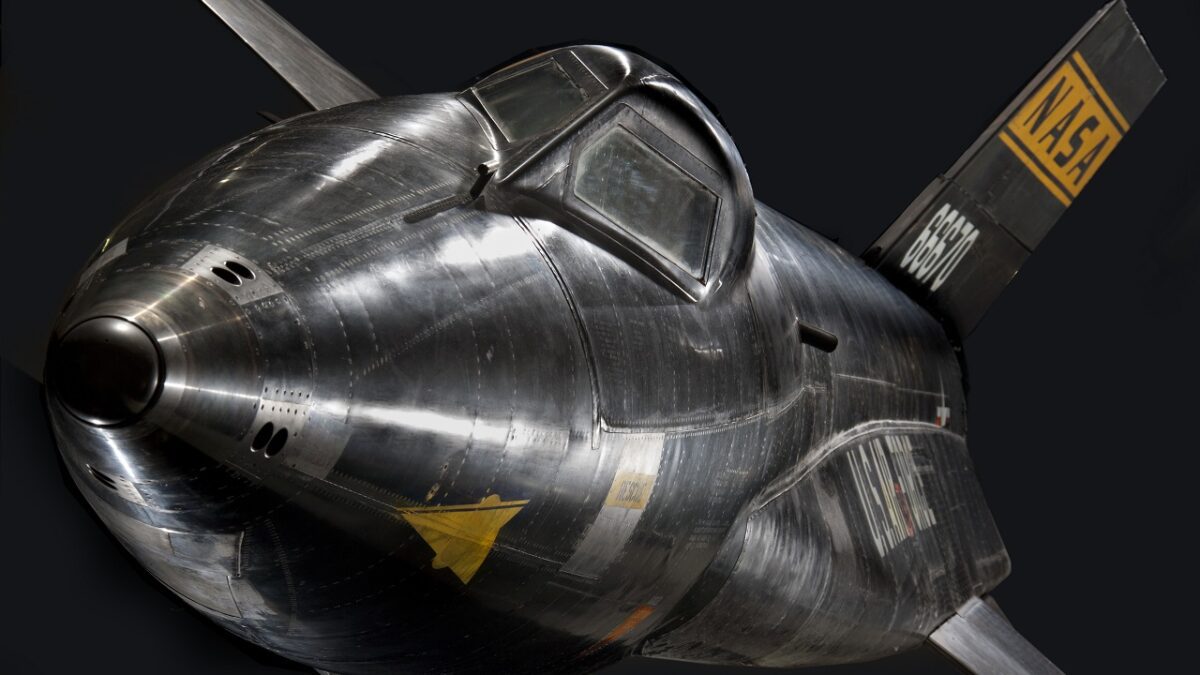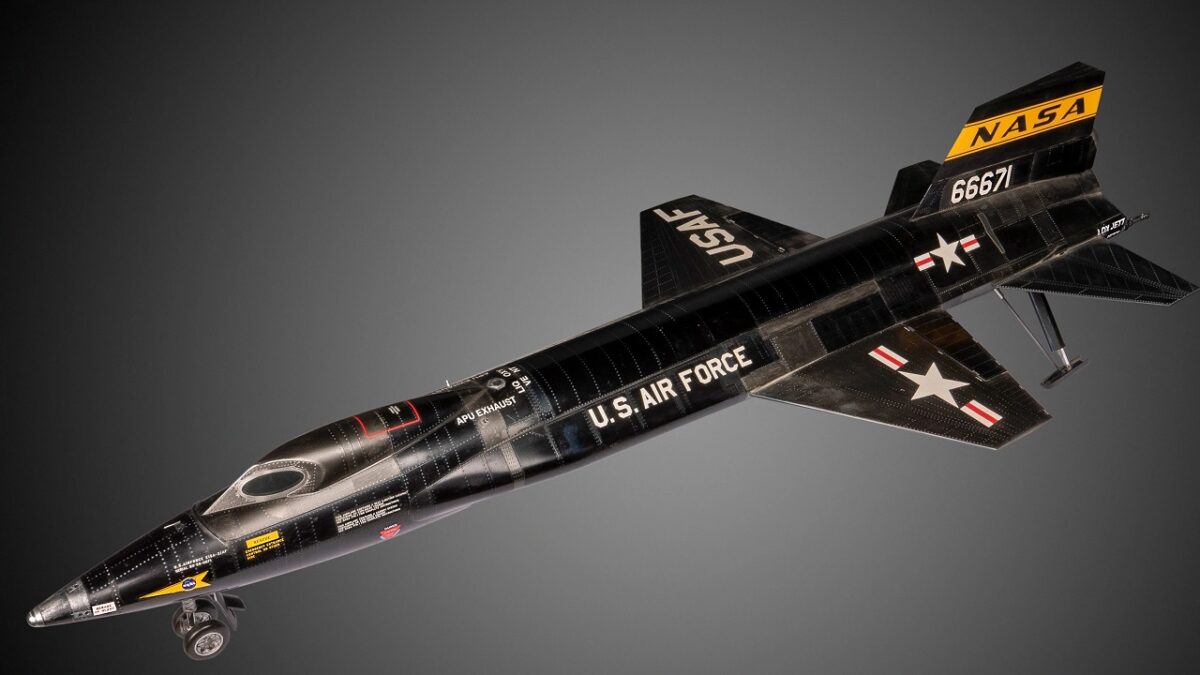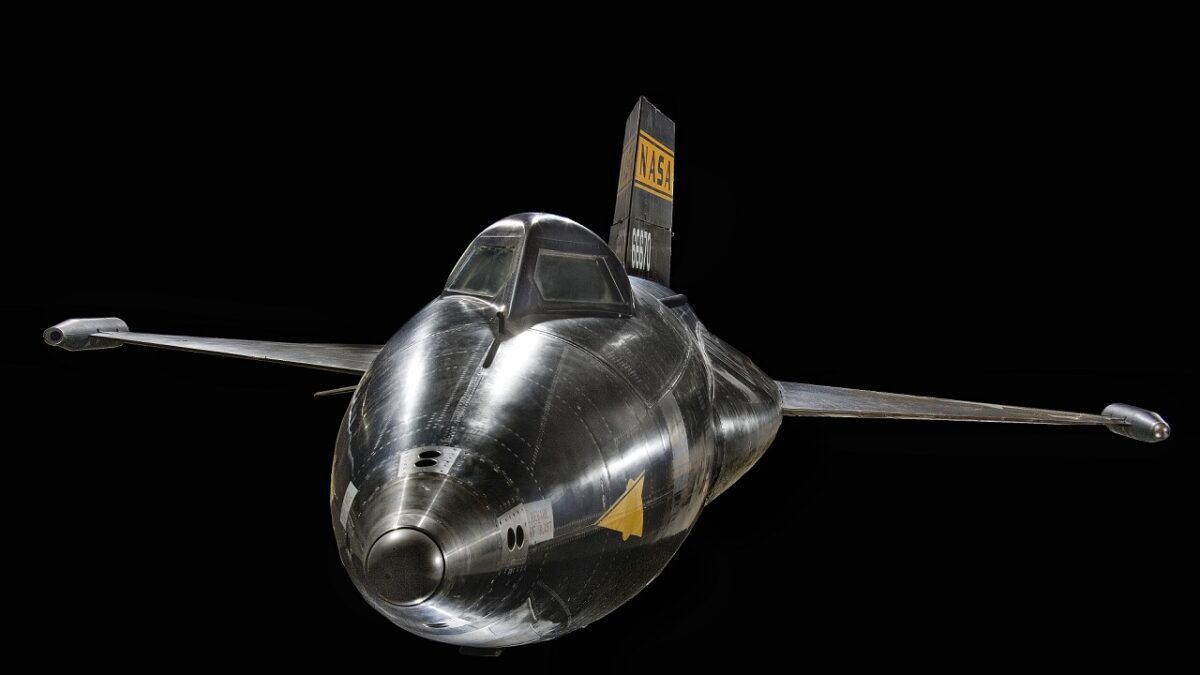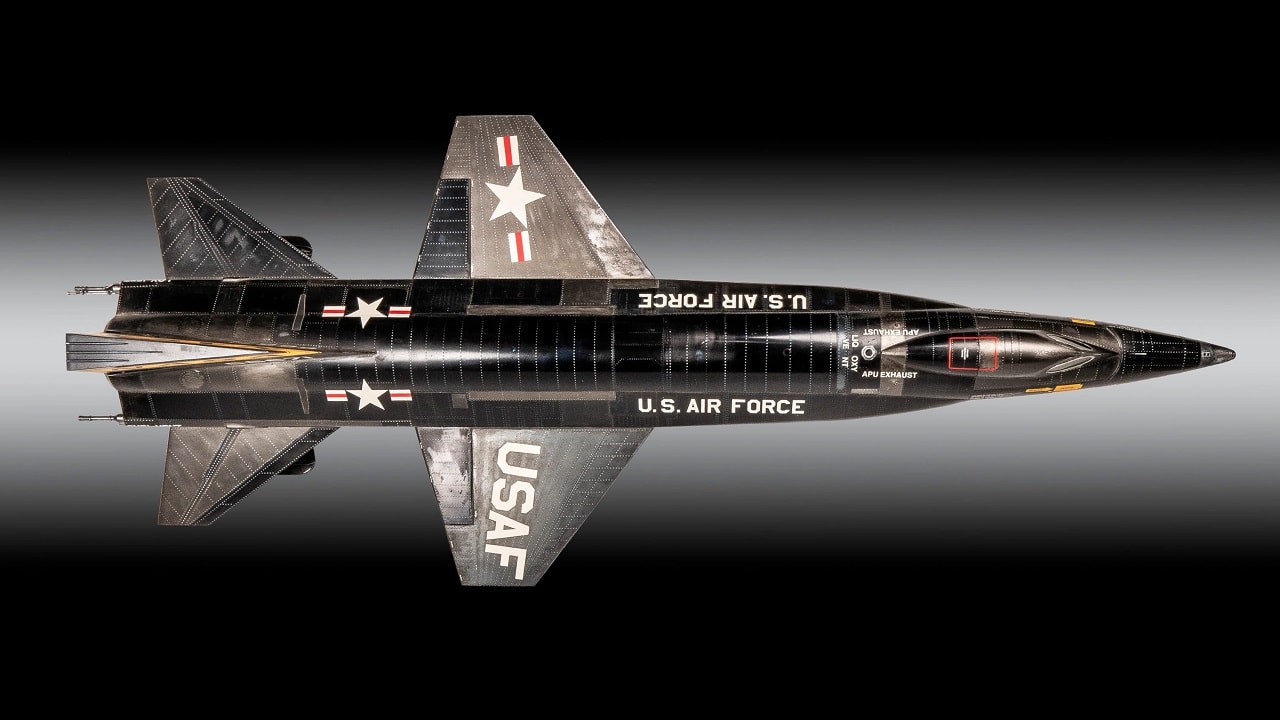Aviation history is filled with many planes – failure or success – that did some amazing and groundbreaking things. The X-15 is clearly in the success category, like this one expert and the former U.S. Air Force officer explained to us: While the SR-71 Blackbird remains the world’s fastest air-breathing aircraft, the rocket-powered X-15 has its own richly deserved place in the aviation history record books: on October 3, 1967, U.S. Air Force test pilot William “Pete” Knight became the fastest flying pilot ever when he achieved a speed of Mach 6.7, a record that has stood for nearly 55 years.
X-15: The Baby Steps Before that “One Small Step for Man…”
As if that one particular superlative weren’t impressive enough, the X-15 helped make history in other ways: before Neil Armstrong became the first man to walk on the Moon, he was taught to fly the X-15 to the edge of space by then-Colonel Chuck Yeager, who, of course, made history in his own right as the first man to break the sound barrier whilst flying the first of the “X” planes, the Bell X-1.
The X-15 was produced by North American Aviation, whose other big claims to fame were the iconic P-51 Mustang of WWII – coincidentally another significant airplane in Chuck Yeager’s career – and the B-25 Mitchell medium bomber immortalized by the Doolittle Raid on Tokyo in 1942 (and, as a personal aside, was the plane my own Dad worked on as an Armorer during his WWII service with Marine Air Group [MAG] 61). Only a total of three airframes were built, but they were darn sure productive, as they conducted a total of 199 flights over a nearly ten-year period from June 1959 to October 1968.
The X-15 was conceived as part of a hypersonic flight research program designed to test and investigate several aspects associated with piloted hypersonic flight, and information gained from the X-15 program would be used in the development of the Mercury, Gemini, and Apollo piloted spaceflight programs – hence cry fortuitous for Mr. Armstrong in particular – as well as in the Space Shuttle Program. Indeed, the X-15 made its actual foray into outer space, albeit just barely: on August 22, 1963, NASA test pilot Joseph A. (Joe) Walker reached 354,200 feet (107,960 meters), an unofficial record altitude of almost 67 miles (107.82 km), thus exceeding the Kármán line, the internationally recognized 100 km altitude used by the Fédération Aéronautique Internationale (FAI) to denote the edge of space.
X-15: Nobody’s Perfect
As impressive as the X-15’s feats were, as is true of any manmade technology, it still had its weaknesses. As described by my 1945 colleague Eli Furhman, “Even with its impressive technical feats and significant contributions to piloted hypersonic and space flight, the X-15 was not perfect. One X-15 pilot lost his life while operating the aircraft, while William Knight, only a few months before his record-setting flight, managed to safely land his aircraft after its entire electrical system failed.”
Bearing these maladies in mind, the X-15’s designers came up with an innovative ejection system that included the use of a pressure suit that protected the pilot from both the windblast of ejecting at Mach 3 and allowed pilots to survive at altitudes of over 250,000 feet (76,200 meters).
In addition, the ejection seat included measures designed to help transfer weight from the pilot’s rear to the seat given the thrust involved in the ejection mechanism that was required to ensure that the pilot would clear the aircraft’s hypersonic shockwave. Special restraints were also added that prevented the pilot’s arms and legs from flailing during ejection, which helped to protect against heat burns. Much of the credit for this survival system belongs to engineer/test pilot A. Scott Crossfield and North American Aviation designer Jerry Madden.
X-15: Where Are They Now? The Planes, That Is, Not the Pilots
Fellow aviation history buffs who would like to see one of these history-making, record-breaking airplanes in person currently only have one option to choose from if they’re insistent on seeing “the real deal,” namely X-15A-2 (AF Ser. No. 56-6671) which is at the National Museum of the United States Air Force at Wright-Patterson AFB, near Dayton, Ohio. For the less nitpicky museum-goers amongst you who are willing to settle for realistic mockups, you have three choices: the Dryden Flight Research Center, Edwards AFB, California; the Pima Air & Space Museum, adjacent to Davis-Monthan AFB, Tucson, Arizona; and the Evergreen Aviation & Space Museum, McMinnville, Oregon
Specifications
Crew: 1
Length: 50 ft (15.24 m)
Wingspan: 22 ft (6.71 m)
Height: 13 ft 8 in (4.21 m)
Wing area: 200 sq ft (60.96 m)
Empty weight: 13,000 lb (5,897 kg)
Gross weight: 15 tons (13607.8 kg)
Powerplant: Thiokol 57,000-pound thrust liquid propellant rocket engine
Maximum speed: mach 6.7
Range: 280 mi (451 km)
Service ceiling: 354,331 ft (108,000 m)
Rate of climb: 60,000 ft/min

Three-quarter left front view, close up, of North American X-15 (s/n 56-6670) at the Smithsonian National Air and Space Museum, July 10, 2007

X-15. Image Credit: Artist Rendition – Creative Commons.

X-15 graphic artist image. Image Credit: Creative Commons.

North American X-15, rocket powered experimental aircraft; black titanium skin with wedge shaped horizontal stablizer; yellow stripe NASA inisignia on tail with stars and red bars United States national insignia on wings; white letter text “U.S. AIR FORCE” on the sides of the fuselage.

X-15. Image Credit: Creative Commons.
Christian D. Orr is a former Air Force officer, Federal law enforcement officer, and private military contractor (with assignments worked in Iraq, the United Arab Emirates, Kosovo, Japan, Germany, and the Pentagon). Chris holds a B.A. in International Relations from the University of Southern California (USC) and an M.A. in Intelligence Studies (concentration in Terrorism Studies) from American Military University (AMU). He has also been published in The Daily Torch and The Journal of Intelligence and Cyber Security.

